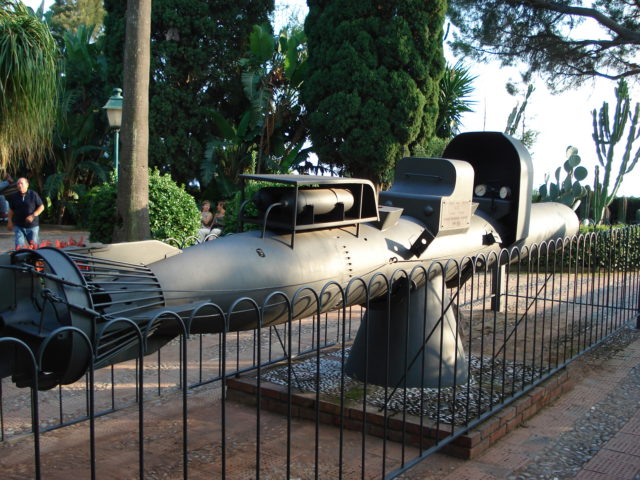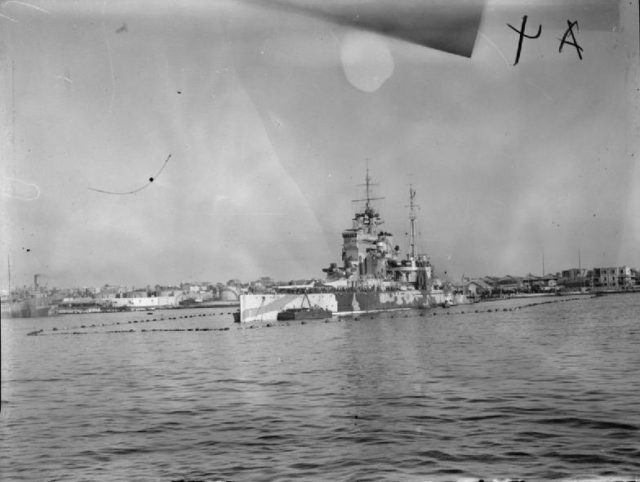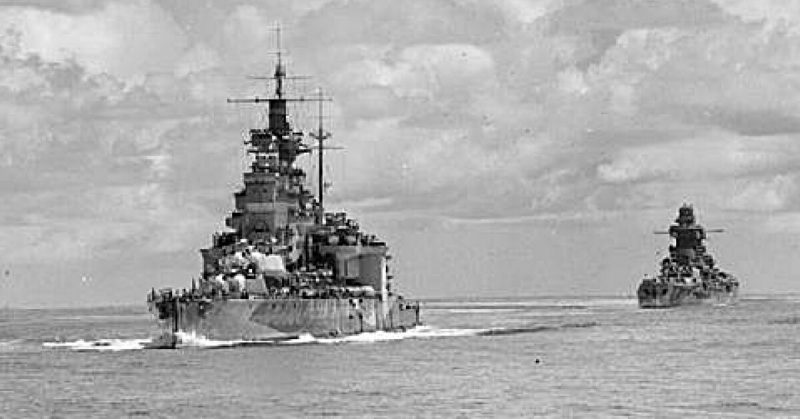Italy’s part in WWII is usually remembered as one of failure and embarrassment. Italian forces were repeatedly rescued from defeat by their German allies. However, the Italians had some successes, notably their raid on Alexandria Harbor in December 1941.
The SLC
Free movement in the Mediterranean was vital to any Italian war effort. British naval supremacy meant it was hard to achieve and also ensured safe supplies for British forces in the region. As war approached in the mid-1930s, Italian specialists looked for ways to counter British naval might.
Looking back to the tactics of WWI they trained small teams of men to enter harbors and attack ships there covertly. They used the siluro a lenta corsa (SLC). They were slow-running torpedoes with detachable warheads which had two pilots and an effective range of 15 miles. While working best at surface level, they could function while entirely submerged. Difficult to use and prone to breaking down, they were known by their operators as “pigs.”
Lost Strategy
The Italians planned to launch simultaneous attacks on every major British base in the Mediterranean. By attacking as soon as the war was declared and using previously unseen weapons, they hoped to catch the British by surprise and create an advantage.
Circumstances intervened. The German race into France pushed Mussolini into a swift entry into the war. The Italian military was not yet ready, and an opportunity was lost.

Early Efforts
Instead, what followed was a series of piecemeal raids.
The first three attempts, in August, September, and October 1940, were thwarted by technical issues and British action. The third attack alerted the British to the fact they were facing manned torpedoes, although they did not have any details.
A rethink followed, the Italians learning from their failures. Over the following year, several raids took place, using both surface boats and submersibles loaded with explosive charges. Some were successes, including the sinking of the heavy cruiser York. Others were failures. Despite the losses it proved the SLC had potential as a weapon.
Approaching Alexandria
By late 1941, the situation was increasingly desperate. The British Navy was strangling the supply lines to Italian and German forces in North Africa, Italy’s most important theater of war. Unknown to the Axis, Polish and British cryptographers had cracked the Enigma code, allowing them to read signals between German commanders. It was helping to direct Allied attacks.
Italian naval ciphers remained secure, and so what came next was a surprise to the Allies.
At 2030 on December 18, the Italian submarine Scirè released three SLCs outside the harbor of Alexandria. Each torpedo was crewed by two men, who were to covertly enter the harbor, plant a series of explosives targeting British ships, sink their vessels and then escape.
Entering the Harbor
The mouth of Alexandria harbor was busy. The boom was repeatedly opened to let ships in and out, even in the middle of the night. A motorboat was patrolling the waters outside, dropping explosive charges to deter submarine attacks.
Lieutenant Luigi Durand de la Penne, piloting the first SLC, entered on the surface. As the boom opened to let three destroyers in, he joined them, thrown about by their wakes.
Captain Antonio Marceglia, piloting the second craft, followed, dodging a destroyer on the way.
Last came the SLC of Captain Vincenzo Martellotta. Passing within 20 meters of the patrol boat, he still made it into the harbor unseen.
Marceglia
Marceglia and his co-pilot made their way to their target, the battleship Queen Elizabeth. They struggled to get their craft into position underneath the ship, at one point slamming against its underside. Despite this, they planted their explosives and got away.
Marceglia’s co-pilot became ill due to the poor air in the SLC. Marceglia surfaced, scattered his remaining explosives, and scuttled the SLC. They then swam to shore.
De la Penne
De la Penne faced a tougher approach. Cables and nets around the battleshipValiant trapped his SLC. He got out and freed the craft, tearing his wetsuit in the process. His co-pilot fainted and floated to the surface. The SLC’s engines refused to restart, and despite his best efforts he could not drag it beneath the Valiant.
Also becoming ill due to his breathing apparatus, de la Penne swam to the surface. He and his co-pilot were captured. Their SLC lay on the bottom of the harbor, close enough to the Valiant that its explosives might still offer a threat.

Martellotta
The last SLC, piloted by Martellotta, approached the aircraft carrier berth but found it empty. In line with his orders, Martellotta targeted an oil tanker, the Norwegian Sagona. Unable to submerge due to problems with his equipment, Martellotta kept his SLC near the ship’s stern while his co-pilot fixed the charges in place.
They scattered their remaining explosives, scuttled the SLC, and swam to shore.
Countermeasures
De la Penne and his co-pilot refused to answer when questioned by their captors. Their presence warned the British that something was amiss, so they ran cables under their ships. They found something under the Queen Elizabeth.
Time was running out.
The Climax
At 0547, the explosives under the Sagona went off. Twenty minutes later, there was an explosion under the Valiant, followed a few minutes later by one under the Queen Elizabeth.
The Valiant was put out of action until August 1942. The Queen Elizabeth did not return to service until January 1944. The Sagona was not repaired until 1946. The destroyer Jervis, moored beside the Sagona, was knocked out for a month.
The attack was a limited success, but it was a success. Together with other Italian activity, it made British convoys in the Mediterranean vulnerable for the next year.
The other four Italian pilots were caught by Egyptian police, who handed them to the British. It was a small price to pay for so few men to do so much damage.
Source:
Vincent P. O’Hara and Enrico Cernuschi (2015), “Frogmen Against a Fleet: The Italian Attack on Alexandria 18/19 December 1941”, Naval War College Review, Vol. 68, No. 3.
